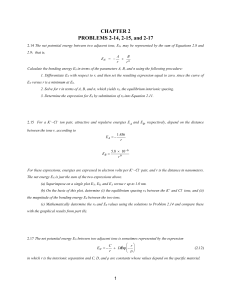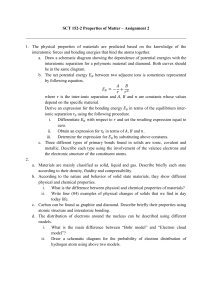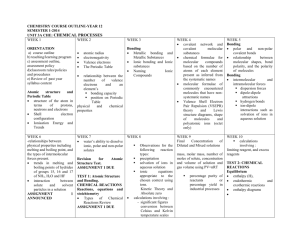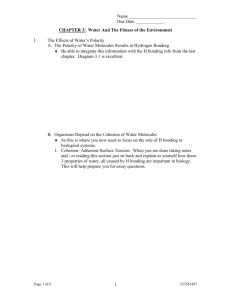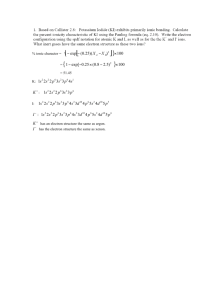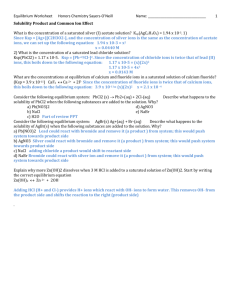ASSIGNMENT_PROBLEM_STATEMENT_CHAPTER_2
advertisement
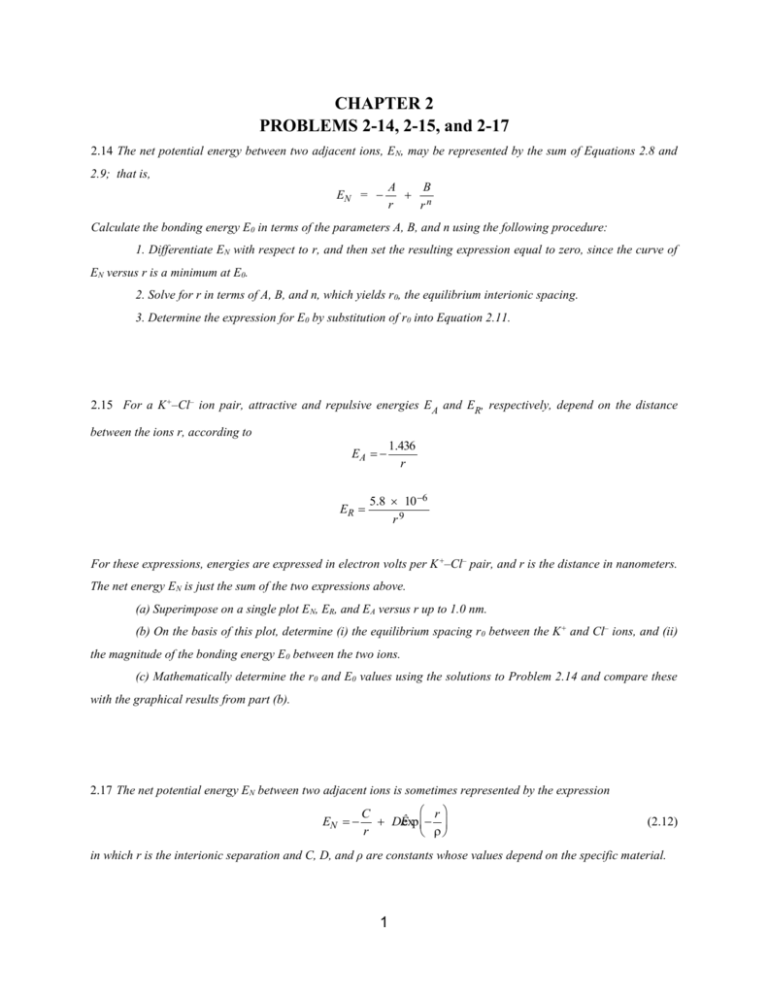
CHAPTER 2 PROBLEMS 2-14, 2-15, and 2-17 2.14 The net potential energy between two adjacent ions, EN, may be represented by the sum of Equations 2.8 and 2.9; that is, EN = A B n r r Calculate the bonding energy E0 in terms of the parameters A, B, and n using the following procedure: 1. Differentiate EN with respect to r, and then set the resulting expression equal to zero, since the curve of EN versus r is a minimum at E0. 2. Solve for r in terms of A, B, and n, which yields r0, the equilibrium interionic spacing. 3. Determine the expression for E0 by substitution of r0 into Equation 2.11. 2.15 For a K+–Cl– ion pair, attractive and repulsive energies EA and ER, respectively, depend on the distance between the ions r, according to EA ER 1.436 r 5.8 10 6 r9 For these expressions, energies are expressed in electron volts per K +–Cl– pair, and r is the distance in nanometers. The net energy EN is just the sum of the two expressions above. (a) Superimpose on a single plot EN, ER, and EA versus r up to 1.0 nm. (b) On the basis of this plot, determine (i) the equilibrium spacing r 0 between the K+ and Cl– ions, and (ii) the magnitude of the bonding energy E0 between the two ions. (c) Mathematically determine the r0 and E0 values using the solutions to Problem 2.14 and compare these with the graphical results from part (b). 2.17 The net potential energy EN between two adjacent ions is sometimes represented by the expression EN r C DÊ exp r (2.12) in which r is the interionic separation and C, D, and ρ are constants whose values depend on the specific material. 1 (a) Derive an expression for the bonding energy E 0 in terms of the equilibrium interionic separation r0 and the constants D and ρ using the following procedure: 1. Differentiate EN with respect to r and set the resulting expression equal to zero. 2. Solve for C in terms of D, ρ, and r0. 3. Determine the expression for E0 by substitution for C in Equation 2.12. (b) Derive another expression for E0 in terms of r0, C, and ρ using a procedure analogous to the one outlined in part (a). 2
